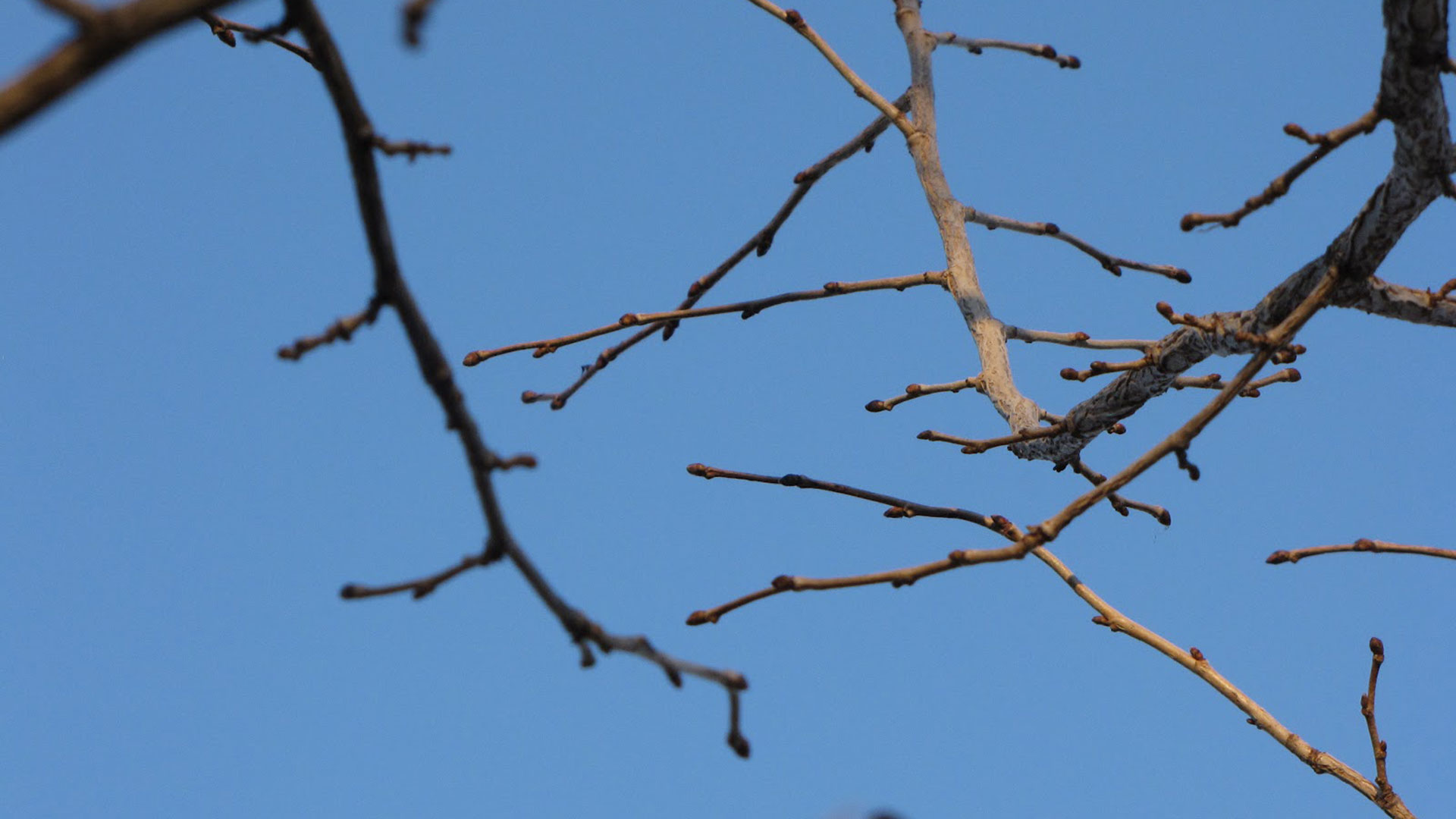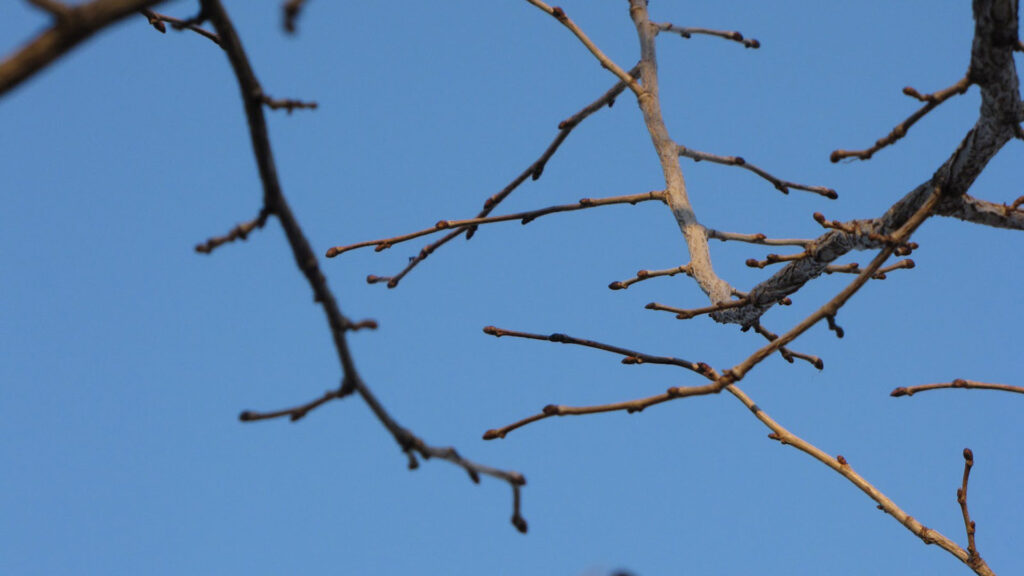Corylus colurna (Turkish filbert) leaf buds – are they ever plumping nicely! I so look forward to watching leaves unfurl all throughout the spring. As I wait and watch, watch and wait, I’ll be slowly wandering around, head craned up towards the tree tops. Only once in a while will I lose track of the feet and run into something, but the rewards are worth it. Oh, that first glimpse of leaves busting loose, such a small but significant confirmation of rebirth and renewal.
It’s not just the buds that are wonderful. Corylus colurna is definitely a completely yard-worthy tree. Tough and adaptable once established – will become one of your landscape favorites, mainly because it demands very little work to keep it happy. Disease and insect problems are minimal. I have observed barkminer activity, but the end result was cosmetic damage at worst. Unfortunately, Japanese beetles will feed a bit on the leaves but fortunately, not to the point of detrimental defoliation. Full sun is definitely preferred. In my experience with siting this particular filbert, shade negatively impacts the fullness of branch and habit development. And although quite tolerant to drought conditions, water equal to a rainfall of 1” – 2” per week should be provided for the first few growing seasons. After that – don’t worry, it can do fine without human intervention.
I love the great natural form of this nut producer. Over time it develops a low branching, distinctly pyramid shape. C. colurna is not a tree for the smaller yard as the height will reach up to about 50’ during your lifetime. Expect to see almost twice that if you live long enough. (Allow space for at least a 30’ spread.) Before the leaves pop open in spring, pretty little dangling catkins will develop during the late winter – sometime in February or March. When they emerge, the darkish green leaves are like all in this genus, quite toothy around the edges, fuzzy on the underside, and with very prominent veins. If you spend a lot of time waiting around for gorgeous fall leaf color, it will not prove to be a very satisfying endeavor with this tree. Expect, at best, a nice yellow that blends well into the fall background. The bark is interestingly textured with some give to it when pressed. Although it takes a number of years for most nut trees to bear productively, this Corylus is worth waiting for – C. colurna is often cited for large and high quality nuts, and generous crop size. If you’re worried about a nutty mess on the yard – don’t. In my experience, beating the squirrels (and other greedy rodent-types) to the crop has been crucial to seeing any crop, anywhere at all.

